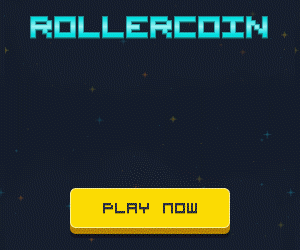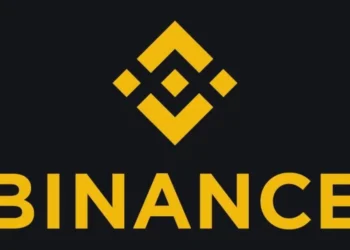In 2024, Bitcoin and Decentralized Finance (DeFi) are more intertwined than ever before. Both have revolutionized the financial landscape, but when combined, they create a force that offers powerful solutions to the limitations of traditional finance. In this blog post, we will explore how Bitcoin and DeFi work together, their synergies, and the opportunities they present in 2024.
What is Bitcoin and DeFi?
Before we dive into how Bitcoin and DeFi complement each other, let’s quickly review what these two terms mean in 2024.
Bitcoin (BTC) is the world’s first decentralized cryptocurrency, serving as a digital store of value and medium of exchange. Since its inception in 2009, Bitcoin has grown into the most widely recognized and trusted cryptocurrency, with its market cap reaching astronomical heights.
Decentralized Finance (DeFi), on the other hand, refers to a collection of financial services—such as lending, borrowing, trading, and earning interest—provided on a decentralized blockchain network, primarily Ethereum. Unlike traditional financial systems, DeFi removes intermediaries like banks and allows users to control their assets through smart contracts.
Bitcoin DeFi, short for Bitcoin Decentralized Finance, refers to the integration of Bitcoin into the DeFi ecosystem, which enables users to access decentralized financial services like lending, borrowing, and trading directly using Bitcoin. DeFi eliminates intermediaries such as banks, allowing users to access financial services directly through smart contracts. These decentralized applications (dApps) make financial services more accessible, transparent, and inclusive.
In 2024, Bitcoin and DeFi have found ways to work together, creating new financial opportunities that offer transparency, security, and freedom to millions of people worldwide.
How Bitcoin and DeFi Work Together in 2024
While Bitcoin was initially created as a standalone asset, its integration with the Bitcoin DeFi ecosystem has gained momentum, providing new opportunities for investors and crypto enthusiasts alike. Here are the primary ways Bitcoin interacts with DeFi:
1. Tokenized Bitcoin on DeFi Protocols
One of the most significant developments in the integration of Bitcoin and DeFi is the creation of Wrapped Bitcoin (WBTC). Since Bitcoin operates on its own blockchain, it cannot be directly used on DeFi platforms (which predominantly run on Ethereum). WBTC is a tokenized version of Bitcoin, backed 1:1 by actual Bitcoin. This allows Bitcoin holders to access DeFi protocols for lending, borrowing, and yield farming, all while maintaining their BTC exposure.
For example, by converting Bitcoin to WBTC, you can provide liquidity on platforms like Uniswap or Aave, where your Bitcoin works to earn passive income.
In 2024, the total value locked (TVL) of Bitcoin on DeFi platforms has reached over $10 billion, reflecting the increasing demand for these combined services.
2. Bitcoin as Collateral in DeFi Lending
Another way Bitcoin interacts with DeFi is by acting as collateral for loans. In 2024, Bitcoin DeFi projects have become increasingly advanced, allowing users to lock up their Bitcoin (through tokenized BTC) to borrow stablecoins or other assets. This method allows Bitcoin holders to access liquidity without having to sell their Bitcoin, preserving their long-term investment.
DeFi platforms like MakerDAO and Compound are ideal for using Bitcoin as collateral, offering flexible loans while retaining full ownership of your BTC.
3. Cross-Chain Bridges
With Bitcoin existing on its blockchain, the introduction of cross-chain bridges has revolutionized how it interacts with DeFi platforms. Cross-chain bridges allow for the seamless transfer of Bitcoin onto Ethereum or other Bitcoin DeFi coins, enabling broader use of Bitcoin in decentralized applications (dApps).
In 2024, cross-chain solutions like RenVM and Thorchain make it easier for Bitcoin to participate in the broader DeFi ecosystem, facilitating decentralized trading and liquidity provision.
Bitcoin and DeFi were once separate entities, but their integration has accelerated in recent years. Today, there are several ways in which Bitcoin operates within the DeFi ecosystem. Here’s how they complement each other:
4. Bitcoin Yield Farming and Liquidity Provision
Bitcoin holders can also participate in yield farming on DeFi platforms. Yield farming involves providing liquidity to DeFi protocols in exchange for rewards. By locking Bitcoin (via WBTC or other tokenized versions) into liquidity pools, users can earn additional tokens or fees for helping stabilize the DeFi market.
The ability to generate passive income from Bitcoin holdings without selling them has made DeFi yield farming extremely attractive in 2024. High yields of up to 20% annual returns are not uncommon in competitive liquidity pools.
5. Decentralized Bitcoin Trading
In 2024, decentralized exchanges (DEXs) like Uniswap and SushiSwap are growing in popularity. Tokenized Bitcoin, such as WBTC, is a key asset traded on these platforms, allowing users to exchange Bitcoin for other cryptocurrencies directly from their wallets without the need for a central intermediary.
DEX trading eliminates the risks associated with centralized exchanges, such as hacks, regulations, and withdrawal limits. For Bitcoin traders, decentralized platforms offer more privacy, security, and control over their funds.
The Benefits of Combining Bitcoin and DeFi in 2024
The integration of Bitcoin and DeFi is providing unprecedented benefits to users worldwide. Here are some of the key advantages:
Financial Inclusion
DeFi is breaking down barriers to financial services. By using Bitcoin in DeFi, millions of people, especially in underbanked regions, can access loans, savings accounts, and investments without needing a bank account.
Passive Income Opportunities
DeFi opens up numerous ways to earn passive income with Bitcoin. By lending out tokenized Bitcoin, providing liquidity in decentralized exchanges (DEXs), or participating in yield farming, Bitcoin holders can generate returns without having to sell their assets. Platforms like Compound offer interest rates ranging from 3% to 12% on borrowed assets, while liquidity pools on Uniswap can yield even higher returns.
Increased Flexibility
The ability to tokenize Bitcoin and use it across various DeFi protocols offers unparalleled flexibility for Bitcoin investors. Whether it’s trading, borrowing, or yield farming, the DeFi ecosystem empowers users to put their Bitcoin to work.
Access to Liquidity Without Selling Bitcoin
One of the biggest advantages of using Bitcoin in DeFi is the ability to access liquidity without selling your Bitcoin. By using Bitcoin as collateral for loans, you can borrow stablecoins or other crypto assets and still maintain your exposure to potential Bitcoin price appreciation.
Enhanced Security and Control
DeFi provides decentralized control over your assets. Since Bitcoin is locked into smart contracts and governed by code rather than centralized institutions, you maintain full control over your assets. Moreover, smart contracts eliminate the need for middlemen, reducing both fees and potential fraud risks.
Using Bitcoin DeFi wallets further enhances security, allowing you to store your tokenized Bitcoin safely while interacting with decentralized applications.
Challenges of Bitcoin and DeFi Integration
Despite the benefits, some challenges come with integrating Bitcoin into DeFi:
1. Security Risks
While DeFi offers decentralization, smart contracts are not without risks. There have been instances of hacking and bugs in the code, leading to losses for investors. It’s important to only use well-audited platforms and stay informed about security practices.
2. Volatility
Bitcoin and DeFi assets can be highly volatile, which poses risks for collateralized loans. If the value of Bitcoin drops, users may need to add more collateral to avoid liquidation, making DeFi borrowing a risky endeavor for some.
3. Regulatory Concerns
With the rise of DeFi, regulators are paying closer attention. Governments may introduce regulations that could impact how DeFi platforms operate, especially when Bitcoin is involved.
4. Smart Contract Risks
DeFi platforms rely on smart contracts, which are essentially codes that automatically execute transactions. If these contracts have vulnerabilities, they can be hacked, leading to the potential loss of funds. This has happened in the past, such as the $600 million Poly Network hack, reminding users to always use audited and well-established platforms.
See also: Crypto Wealth Academy Review by David Howard: Unlocking Financial Freedom in the Digital Age
How to Get Started with Bitcoin in DeFi (Step-by-Step)
If you’re ready to dive into the world of Bitcoin and Defi, here’s a simple guide to get started:
Step 1: Acquire Bitcoin
The first step is to acquire Bitcoin. You can buy Bitcoin on trusted exchanges like Coinbase, Binance, or Kraken. Ensure you store your Bitcoin in a secure wallet like Ledger or Trezor for safety.
Step 2: Convert Bitcoin to Wrapped Bitcoin (WBTC)
Once you have Bitcoin, you’ll need to convert it to Wrapped Bitcoin (WBTC) to use it on DeFi platforms. This can be done on platforms like Kyber or Binance. Converting BTC to WBTC will allow you to access DeFi protocols built on Ethereum.
Step 3: Choose a DeFi Platform
Next, choose a DeFi platform to begin lending, borrowing, or providing liquidity. Platforms like Aave, Uniswap, and SushiSwap are popular for beginners. These platforms offer a user-friendly interface and extensive opportunities to earn passive income or borrow against your Bitcoin holdings.
Step 4: Monitor and Manage Your Investments
Finally, keep track of your DeFi investments and the price movements of Bitcoin. Monitoring collateral ratios is crucial to avoid liquidation risks. Tools like DeFi Pulse and Zapper can help you stay on top of your portfolio.
What’s next for Bitcoin and DeFi?
The future of Bitcoin and DeFi in 2024 looks promising, with continued innovation and growth in cross-chain technology, decentralized applications, and user adoption. New protocols and layer-2 solutions, such as Lightning Network integration with DeFi, will further increase scalability and reduce transaction costs, making it easier for Bitcoin to flow seamlessly through DeFi platforms.
As more institutions and retail investors adopt Bitcoin, its use in DeFi is expected to increase, paving the way for greater liquidity and more financial opportunities for users around the world.
The Future of Bitcoin and DeFi in 2024
In 2024, the combination of Bitcoin and DeFi will continue to revolutionize the financial industry. With cross-chain solutions, increased adoption of tokenized Bitcoin, and further innovation in decentralized applications, Bitcoin’s role in DeFi is expected to expand even further. As blockchain technology evolves, DeFi will offer even more innovative ways for Bitcoin holders to earn, trade, and manage their assets without relying on traditional financial systems.
7 ways Bitcoin and DeFi are revolutionizing Finance in 2024
The financial landscape is evolving at breakneck speed, and two powerhouses are leading the charge: Bitcoin and Decentralized Finance (DeFi). As we navigate the complexities of the digital economy in 2024, understanding how these revolutionary technologies intersect is crucial for investors, entrepreneurs, and curious minds alike. This article dives deep into the symbiotic relationship between Bitcoin and DeFi, exploring how they’re reshaping the future of finance and creating unprecedented opportunities for financial freedom.
The Bitcoin-DeFi Nexus: A game-changing alliance
1. Bitcoin as collateral: Unlocking new possibilities
One of the most exciting developments in the Bitcoin-DeFi space is the use of Bitcoin as collateral. DeFi platforms are now integrating Bitcoin, allowing users to leverage their BTC holdings to access a wide range of financial services. This integration opens up a world of possibilities:
- Loans: Borrow against your Bitcoin without selling it
- Yield Farming: Earn interest on your Bitcoin by providing liquidity to DeFi protocols
- Leveraged Trading: Amplify your trading power using Bitcoin as collateral
2. Cross-Chain Bridges: Connecting Bitcoin to the DeFi Ecosystem
Cross-chain bridges are the unsung heroes of the Bitcoin-DeFi integration. These technological marvels allow Bitcoin to be “wrapped” and used on other blockchain networks, such as Ethereum, where most DeFi activity takes place. Popular bridges include:
- Wrapped Bitcoin (WBTC)
- RenBTC
- tBTC
These bridges have facilitated the flow of billions of dollars worth of Bitcoin into the DeFi ecosystem, enhancing liquidity and opening up new investment strategies.
3. Bitcoin Lightning Network: Scaling DeFi transactions
The Lightning Network, Bitcoin’s layer-2 scaling solution, is playing an increasingly important role in DeFi. By enabling near-instantaneous, low-cost transactions, Lightning is addressing one of the main pain points in the DeFi space: high gas fees and network congestion. This synergy is leading to:
- Faster DeFi trades
- Reduced transaction costs
- Improved user experience
4. Decentralized Exchanges (DEXs) for Bitcoin
The rise of Bitcoin-focused DEXs is another testament to the growing integration of Bitcoin and DeFi. Platforms like:
- Thorchain
- Sovryn
- Bitcoin Beach
These DEXs allow users to trade Bitcoin and other cryptocurrencies without intermediaries, embodying the true spirit of decentralization.
5. Bitcoin-based Stablecoins: A new paradigm
Stablecoins are a crucial component of the DeFi ecosystem, and Bitcoin-based stablecoins are gaining traction. Projects like:
- tBTC
- sBTC
These offer the stability of traditional stablecoins with the added security and decentralization of the Bitcoin network.
6. Yield Farming with Bitcoin
Yield farming, one of DeFi’s most popular activities is no longer limited to Ethereum-based assets. Bitcoin holders can now participate in yield farming strategies through various platforms, earning impressive returns on their BTC holdings.
7. Governance and DAOs: Bitcoin’s voice in DeFi
As DeFi protocols evolve, governance becomes increasingly important. Bitcoin holders are now able to participate in Decentralized Autonomous Organizations (DAOs) and influence the direction of various DeFi projects, ensuring that the interests of the Bitcoin community are represented in the broader DeFi ecosystem.
Conclusion
The synergy between Bitcoin and DeFi has reshaped the financial landscape in 2024. Together, they offer a decentralized, inclusive, and innovative alternative to traditional finance. Whether you’re a Bitcoin investor looking to earn passive income or a DeFi enthusiast seeking secure collateral, this partnership offers unparalleled opportunities.
As we move forward, the collaboration between Bitcoin and DeFi will continue to evolve, empowering individuals with greater financial freedom and flexibility. Now is the time to explore how you can benefit from the integration of Bitcoin into the DeFi ecosystem.
Dijiste
ChatGPT dijo:
FAQs
What is the DeFi trend in 2024?
In 2024, the DeFi trend is focusing on cross-chain compatibility, making it easier for Bitcoin and other cryptocurrencies to be used across multiple blockchains. The growth of decentralized exchanges (DEXs), yield farming, and liquidity provision continues, with more traditional financial services being replaced by decentralized platforms. Additionally, there is an increasing focus on DeFi security and regulatory compliance to protect users.
What is the expectation of Bitcoin in 2024?
The expectation for Bitcoin in 2024 is that it will continue to act as a store of value, with further adoption by institutions, retail investors, and even nation-states. Integration with DeFi platforms and cross-chain solutions will expand Bitcoin’s use case beyond just being a digital currency. Analysts predict that Bitcoin’s price could continue to rise as demand increases, particularly in countries facing inflation or financial instability.
What crypto will be big in 2024?
In addition to Bitcoin, Ethereum will remain dominant in 2024 due to its role in powering DeFi and smart contracts. Other cryptocurrencies that may become big include Polkadot (DOT), Solana (SOL), and Avalanche (AVAX), which are all supporting scalable blockchain solutions. Furthermore, Layer 2 solutions and cross-chain protocols that enhance scalability, like Polygon (MATIC), are expected to grow in importance.
Is there a DeFi on Bitcoin?
Yes, there will be DeFi on Bitcoin in 2024, mainly through tokenized Bitcoin like Wrapped Bitcoin (WBTC), which allows Bitcoin to be used on Ethereum-based DeFi platforms. Additionally, cross-chain bridges like RenVM and projects such as Sovryn are making it possible for Bitcoin holders to participate in DeFi without leaving the Bitcoin network entirely.
How does Bitcoin integrate with DeFi?
Bitcoin integrates with DeFi primarily through tokenization, where Bitcoin is converted into a version that can be used on other blockchains, such as WBTC on Ethereum. Bitcoin holders can access DeFi services like lending, borrowing, and yield farming. Cross-chain bridges and decentralized exchanges also facilitate Bitcoin’s participation in the DeFi ecosystem.
What are the risks of using Bitcoin in DeFi?
The main risks include smart contract vulnerabilities, which could lead to hacks or loss of funds, and the volatility of Bitcoin. If Bitcoin’s price drops significantly while it’s being used as collateral, users may need to add more collateral to avoid liquidation. There’s also the potential for regulatory challenges as governments start to monitor DeFi activities more closely.
Can you earn passive income using Bitcoin in DeFi?
Yes, Bitcoin holders can earn passive income by lending their Bitcoin (via tokenized versions like WBTC) on DeFi platforms or by providing liquidity to decentralized exchanges. They can earn interest or yield farming rewards without needing to sell their Bitcoin, allowing them to benefit from both price appreciation and passive income.
What is Wrapped Bitcoin (WBTC) and how do they work?
Wrapped Bitcoin (WBTC) is a tokenized version of Bitcoin that is compatible with Ethereum-based DeFi protocols. Bitcoin fully backs WBTC and allows users to utilize their BTC on platforms that don’t support native Bitcoin, such as Ethereum. This expands the functionality of Bitcoin in decentralized finance applications.
How secure is DeFi when using Bitcoin?
DeFi platforms vary in terms of security, so it’s essential to use audited smart contracts and established platforms with strong security records. Risks like hacks or bugs in the code can result in the loss of funds. Always perform thorough research on the platform you are using and consider storing your assets in a hardware wallet for added security.
How do cross-chain bridges benefit Bitcoin in DeFi?
Cross-chain bridges allow Bitcoin to interact with other blockchains, such as Ethereum or Solana, without needing a centralized exchange. These bridges facilitate the movement of Bitcoin between networks, enabling its use in DeFi platforms and creating more flexibility for Bitcoin holders. This allows Bitcoin to access features like smart contracts and yield farming, which would otherwise be unavailable on the Bitcoin network.
DijisteChatGPT dijo:
Is it safe to use Bitcoin in DeFi protocols?
While DeFi offers exciting opportunities, it’s not without risks. Always research thoroughly, use reputable platforms, and never invest more than you can afford to lose. Smart contract audits and insurance protocols can provide additional layers of security.
How does Bitcoin’s volatility affect its use in DeFi?
Bitcoin’s price volatility can impact its role in DeFi, particularly when used as collateral. Many platforms implement over-collateralization and liquidation mechanisms to mitigate this risk. Some users also leverage Bitcoin-based stablecoins to reduce volatility exposure.
What are the tax implications of using Bitcoin in DeFi?
Tax regulations vary by jurisdiction, but generally, using Bitcoin in DeFi activities may trigger taxable events. Consult with a tax professional to understand your obligations and keep detailed records of all transactions.
How does Bitcoin’s limited programmability affect its DeFi integration?
While Bitcoin’s base layer has limited programmability compared to platforms like Ethereum, layer-2 solutions and cross-chain bridges are overcoming these limitations, enabling more complex DeFi interactions with Bitcoin.
What’s the future outlook for Bitcoin in DeFi?
The integration of Bitcoin and DeFi is likely to deepen, with more sophisticated financial products, improved interoperability, and enhanced security measures. As regulatory frameworks evolve, we may see increased institutional adoption of Bitcoin-DeFi solutions.
WARNING: This is an informational article. Geek Metaverse is a media outlet, it does not promote, endorse or recommend any particular investment. It is worth noting that cryptoasset investments are not regulated in some countries.
They may not be appropriate for retail investors, as the full amount invested could be lost. Check your country’s laws before investing.
Disclaimer: Some of the links on this page could be affiliate links, where I earn a commission if you purchase via my link.
Follow us on our social networks and keep up to date with everything that happens in the Metaverse!
Twitter Linkedin Facebook Telegram Instagram Google News Amazon Store
Recent Posts
- Binance Blockchain Week 2025 returns to Dubai
- How to mine Bitcoin for Free on your Phone in 2025
- Coinstore hits 10 Million Users Milestone, Join Grand Celebration with $100,000 + Prize Pool
- Domus Crypto Launches LIA, an AI-Driven Assistant for Personalized Portfolio Management
- BitGo Launches Institutional Support for sBTC, Expanding Bitcoin DeFi Accessibility












































